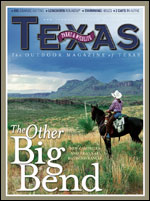
Skill Builder : A Birder is Born
How to get started in birdwatching.
By Bernadette Noll
There are all manner of ways in which one can get lured into being a birdwatcher. Perhaps you were bit by the birding bug while sitting in your own backyard or while watching a documentary on public television. Maybe you got it from a friend or family member whose addiction, er, um, hobby, was just too big to ignore.
However you got the idea, there are simple steps you can take toward your desired goal of being a bonafide birder. A warning, however, before you embark: Just know that birding can be a slippery slope, going quickly from an interesting pastime to a full-fledged, life-altering obsession. Read on but consider yourself warned.
To get started you only need two things: a good pair of binoculars and a decent field guide. There are nearly as many field guides as there are birds, and while some cover the entire country, many are divided by region: east, west, southern, central, etc. There are state guides available also, especially for a birding state like Texas. Look online or go to your local bookstore or library to get an idea of what guides cover your area. If you think you'll bird all over North America, you'll want to get a guide such as The National Geographic Field Guide to the Birds of North America or, the book quickly becoming the birder's bible, The Sibley Guide to Birds, with over 6,000 paintings by David Sibley. Some of the more popular field guides also include the Peterson field guides, the Stokes photographic guides and the Kaufman guides, which are enhanced photographic guides.
Whichever guide you choose, get familiar with it before heading out into the field. This way you'll be able to learn its layout and be ready to identify traits such as beak shape, habitat, flight patterns, migratory patterns and bird calls. Studying the birds in the book will give you a definite advantage when you go out into the field.
With a little research, you can find optics that suit your needs and your budget. You can get help selecting binoculars by visiting a local optics shop. If you prefer shopping online you can get information at such Web sites as OpticsPlanet.net or Betterviewdesired.com, an independent Internet journal of birding optics reviews.
Some things to remember when searching for birding binoculars are image quality, durability and weight/size/ease of use. If you plan on carrying them around all day, you'll want a pair you won't mind toting. There are different types of straps available, which can also impact your usage. The price of optics can range from $20 to more than $1,000, with quality binoculars beginning at around $250. Buying used is one way to get a little bit more for your money – just make sure to buy from a reliable seller or test them before purchasing.
Before heading out, check for an Audubon Society chapter in your area. They may have a local bird checklist to learn what birds you can expect in your region in different seasons. They may also have classes or field trips or be able to hook you up with an experienced birder who is interested in passing on his or her knowledge and love of birding. Take advantage of any opportunity to go out with more experienced birders, as they will be able to help you learn the basics of spotting, listening to and identifying the birds around you.
When it comes to birding, perhaps the best way to learn is to start local, even in your own backyard and learn the features of the birds around you. Study online at such sites as the Cornell Lab of Ornithology (www.birds.cornell.edu). Use your field guides too and go quietly out into the nearby fields, forests and parks, letting your ears and eyes be your tools. Once you get started, it is just a matter of study and patience in learning to recognize and appreciate the splendor of the many birds around us.

